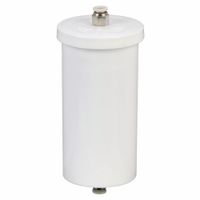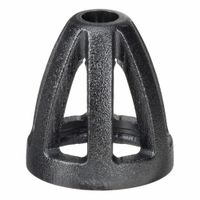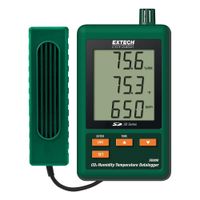Call +(254) 703 030 000 / 751 483 999 / 721 704 777
- Home
- Test Instruments
- Air Movement Quality Testing
- Indoor Air Quality Testing
.....Read More
Frequently Asked Questions
What is the best indoor air quality testing equipment?
The best indoor air quality testing equipment varies based on specific needs, but some top options include:
1. **IQAir AirVisual Pro**: This device offers real-time monitoring of PM2.5, CO2, temperature, and humidity. It features a high-accuracy laser sensor and provides data via a mobile app, making it ideal for comprehensive home monitoring.
2. **Awair Element**: Known for its sleek design, the Awair Element tracks five key factors: PM2.5, VOCs, CO2, temperature, and humidity. It provides personalized recommendations to improve air quality and integrates with smart home systems.
3. **Temtop M10**: A budget-friendly option, the Temtop M10 measures PM2.5, PM10, and AQI. It’s portable and easy to use, making it suitable for quick assessments in various indoor environments.
4. **Foobot**: This device monitors VOCs, PM2.5, CO2, temperature, and humidity. It offers real-time feedback and connects to smart home devices, providing actionable insights to improve air quality.
5. **uHoo**: A premium option, uHoo measures nine parameters, including PM2.5, CO2, VOCs, ozone, and nitrogen dioxide. It offers detailed analytics and integrates with smart home systems for automated air quality management.
6. **Dylos DC1100 Pro**: This particle counter is highly accurate for detecting PM2.5 and PM10. It’s suitable for those who need precise particle measurement, such as allergy sufferers or those in industrial settings.
When choosing equipment, consider factors like the specific pollutants you need to monitor, budget, ease of use, and integration with other smart devices. Each of these devices offers unique features that cater to different needs, ensuring you can find the best fit for your indoor air quality monitoring requirements.
How do I choose the right gas detector for my needs?
1. **Identify Hazards**: Determine the types of gases present in your environment. Common gases include carbon monoxide, hydrogen sulfide, methane, and oxygen. Understanding the specific gases will guide your choice.
2. **Detection Range**: Consider the concentration levels of gases you need to detect. Ensure the detector can measure the required range, from low to high concentrations.
3. **Environment**: Assess the environmental conditions where the detector will be used. Factors like temperature, humidity, and potential exposure to water or dust can influence the choice of a detector.
4. **Type of Detector**: Decide between fixed or portable detectors. Fixed detectors are ideal for continuous monitoring in a specific location, while portable detectors are suitable for personal use and mobility.
5. **Sensor Technology**: Choose the appropriate sensor technology based on the gases to be detected. Options include electrochemical sensors for toxic gases, catalytic bead sensors for combustible gases, and infrared sensors for carbon dioxide and hydrocarbons.
6. **Alarm System**: Ensure the detector has a reliable alarm system, including visual, audible, and vibration alerts, to notify users of dangerous gas levels.
7. **Ease of Use**: Look for user-friendly features such as easy calibration, clear display, and simple operation to ensure effective use by personnel.
8. **Certification and Compliance**: Verify that the detector meets industry standards and certifications, such as ATEX, UL, or CSA, to ensure safety and reliability.
9. **Maintenance and Support**: Consider the availability of maintenance services, replacement parts, and technical support to ensure long-term functionality.
10. **Budget**: Balance your needs with your budget, considering both initial costs and long-term maintenance expenses.
What factors should I consider when buying a particle counter?
When buying a particle counter, consider the following factors:
1. **Type of Particle Counter**: Decide between handheld, portable, or remote particle counters based on your mobility needs and application.
2. **Particle Size Range**: Ensure the device can detect the specific particle sizes relevant to your application, such as PM2.5 or PM10 for air quality monitoring.
3. **Flow Rate**: Check the flow rate to ensure it meets your sampling requirements. Higher flow rates can provide faster results.
4. **Data Output and Storage**: Look for devices with sufficient data storage capacity and options for data export, such as USB, Bluetooth, or Wi-Fi connectivity.
5. **Calibration and Accuracy**: Ensure the particle counter is calibrated to industry standards for accurate measurements. Consider devices with self-calibration features.
6. **Environmental Conditions**: Consider the operating temperature and humidity range to ensure the device functions effectively in your environment.
7. **Ease of Use**: Look for user-friendly interfaces, clear displays, and straightforward operation to facilitate ease of use.
8. **Battery Life**: For portable devices, check the battery life to ensure it meets your operational needs without frequent recharging.
9. **Maintenance and Support**: Consider the availability of customer support, warranty, and ease of maintenance, including filter replacement and cleaning.
10. **Cost**: Balance your budget with the features and specifications you need. Consider long-term costs, including maintenance and calibration.
11. **Compliance and Standards**: Ensure the device complies with relevant industry standards and regulations for your specific application.
12. **Application-Specific Features**: Look for additional features like alarms, data logging, or integration with other systems if required for your application.
How do gas analyzers work and what gases can they detect?
Gas analyzers work by detecting and measuring the concentration of specific gases within a sample. They employ various technologies depending on the type of gas and the required sensitivity. Common methods include:
1. **Infrared (IR) Absorption**: Utilizes the principle that gases absorb specific wavelengths of infrared light. The amount of absorption is proportional to the gas concentration. This method is effective for gases like CO2, CO, and hydrocarbons.
2. **Electrochemical Sensors**: These sensors generate a current when a target gas undergoes a chemical reaction at the sensor's electrode. The current is proportional to the gas concentration. They are commonly used for detecting gases like O2, CO, NO2, and H2S.
3. **Photoionization Detectors (PID)**: Use ultraviolet light to ionize gas molecules, creating charged particles. The current produced is proportional to the concentration of volatile organic compounds (VOCs) and some inorganic gases.
4. **Catalytic Bead Sensors**: Detect combustible gases by oxidizing them on a heated catalyst, causing a change in resistance. This method is suitable for detecting methane, propane, and other flammable gases.
5. **Semiconductor Sensors**: Use metal oxide semiconductors that change resistance when exposed to certain gases. They are used for detecting gases like CO, NH3, and alcohol vapors.
6. **Mass Spectrometry**: Identifies gases by ionizing them and measuring their mass-to-charge ratio. It can detect a wide range of gases with high precision.
Gas analyzers can detect a variety of gases, including but not limited to: oxygen (O2), carbon dioxide (CO2), carbon monoxide (CO), nitrogen oxides (NOx), sulfur dioxide (SO2), hydrogen sulfide (H2S), methane (CH4), ammonia (NH3), and various volatile organic compounds (VOCs). The choice of analyzer depends on the specific application, required sensitivity, and environmental conditions.
What are the benefits of using a smartphone gas detector?
Smartphone gas detectors offer several benefits, enhancing safety, convenience, and efficiency. Firstly, they provide real-time monitoring and alerts, allowing users to detect hazardous gases quickly and respond promptly to potential dangers. This immediacy is crucial in preventing accidents and ensuring safety in environments where gas leaks might occur.
Secondly, these devices are highly portable and user-friendly. Being integrated with smartphones, they eliminate the need for bulky equipment, making them easy to carry and use in various settings, from industrial sites to residential areas. The intuitive interfaces of smartphone apps also make it easier for users to interpret data and take necessary actions.
Thirdly, smartphone gas detectors often come with connectivity features, enabling data sharing and remote monitoring. This connectivity allows for seamless communication with emergency services or other stakeholders, facilitating quicker response times in critical situations. Additionally, data can be logged and analyzed over time, providing valuable insights into gas exposure patterns and helping in preventive maintenance and safety planning.
Moreover, these detectors are cost-effective. By leveraging existing smartphone technology, they reduce the need for separate, expensive gas detection equipment. This affordability makes them accessible to a broader range of users, from individual consumers to small businesses.
Finally, smartphone gas detectors can be integrated with other smart home or industrial systems, enhancing overall safety and automation. They can trigger alarms, ventilation systems, or other safety protocols automatically, further reducing the risk of gas-related incidents.
In summary, smartphone gas detectors offer real-time monitoring, portability, connectivity, cost-effectiveness, and integration capabilities, making them a valuable tool for enhancing safety and efficiency in various environments.
How often should indoor air quality equipment be calibrated?
Indoor air quality (IAQ) equipment should typically be calibrated at least once a year to ensure accurate readings and optimal performance. However, the frequency of calibration can vary based on several factors:
1. **Manufacturer's Recommendations**: Always follow the specific guidelines provided by the equipment manufacturer, as they may have particular calibration schedules based on the technology and design of the device.
2. **Type of Equipment**: Different types of IAQ equipment, such as carbon dioxide sensors, particulate matter monitors, or volatile organic compound detectors, may have varying calibration needs. Some may require more frequent calibration due to sensor drift or environmental exposure.
3. **Usage Environment**: In environments with high levels of pollutants or fluctuating conditions, more frequent calibration may be necessary. For instance, industrial settings or areas with significant temperature and humidity changes can affect sensor accuracy.
4. **Regulatory Requirements**: Certain industries or regions may have specific regulations mandating calibration intervals for IAQ equipment to ensure compliance with health and safety standards.
5. **Historical Performance**: If past calibrations have shown significant drift or inaccuracy, increasing the frequency of calibration might be prudent to maintain reliable data.
6. **Critical Applications**: In environments where air quality is critical, such as hospitals or laboratories, more frequent calibration may be warranted to ensure the highest level of accuracy and safety.
Regular calibration is essential to maintain the integrity of IAQ data, which is crucial for making informed decisions about ventilation, filtration, and other air quality management strategies. Always document calibration activities and results to track performance over time and adjust schedules as necessary.
What maintenance is required for indoor air quality testing equipment?
Maintenance of indoor air quality testing equipment is crucial to ensure accurate and reliable results. Regular calibration is essential to maintain the precision of sensors and instruments. This involves adjusting the equipment to match a known standard or reference, typically performed by the manufacturer or a certified technician.
Cleaning is another critical aspect. Dust, dirt, and other particulates can accumulate on sensors and affect readings. Regularly clean the exterior and sensor areas with appropriate materials to prevent contamination.
Battery maintenance is necessary for portable devices. Ensure batteries are charged and replaced as needed to avoid interruptions during testing. For devices with rechargeable batteries, follow the manufacturer's guidelines for charging cycles to prolong battery life.
Software updates are important for devices with digital interfaces. Manufacturers may release updates to improve functionality or address bugs. Regularly check for and install these updates to ensure optimal performance.
Inspect and replace filters if the equipment includes air sampling components. Clogged or dirty filters can impede airflow and skew results. Follow the manufacturer's recommendations for filter replacement intervals.
Check for physical damage regularly. Inspect cables, connectors, and housing for signs of wear or damage that could affect performance. Address any issues promptly to prevent further damage.
Store equipment properly when not in use. Keep it in a clean, dry environment, away from extreme temperatures and humidity, to prevent damage to sensitive components.
Finally, maintain a log of maintenance activities, including calibration dates, cleaning schedules, and any repairs or replacements. This record helps track the equipment's condition and ensures compliance with any regulatory requirements.







